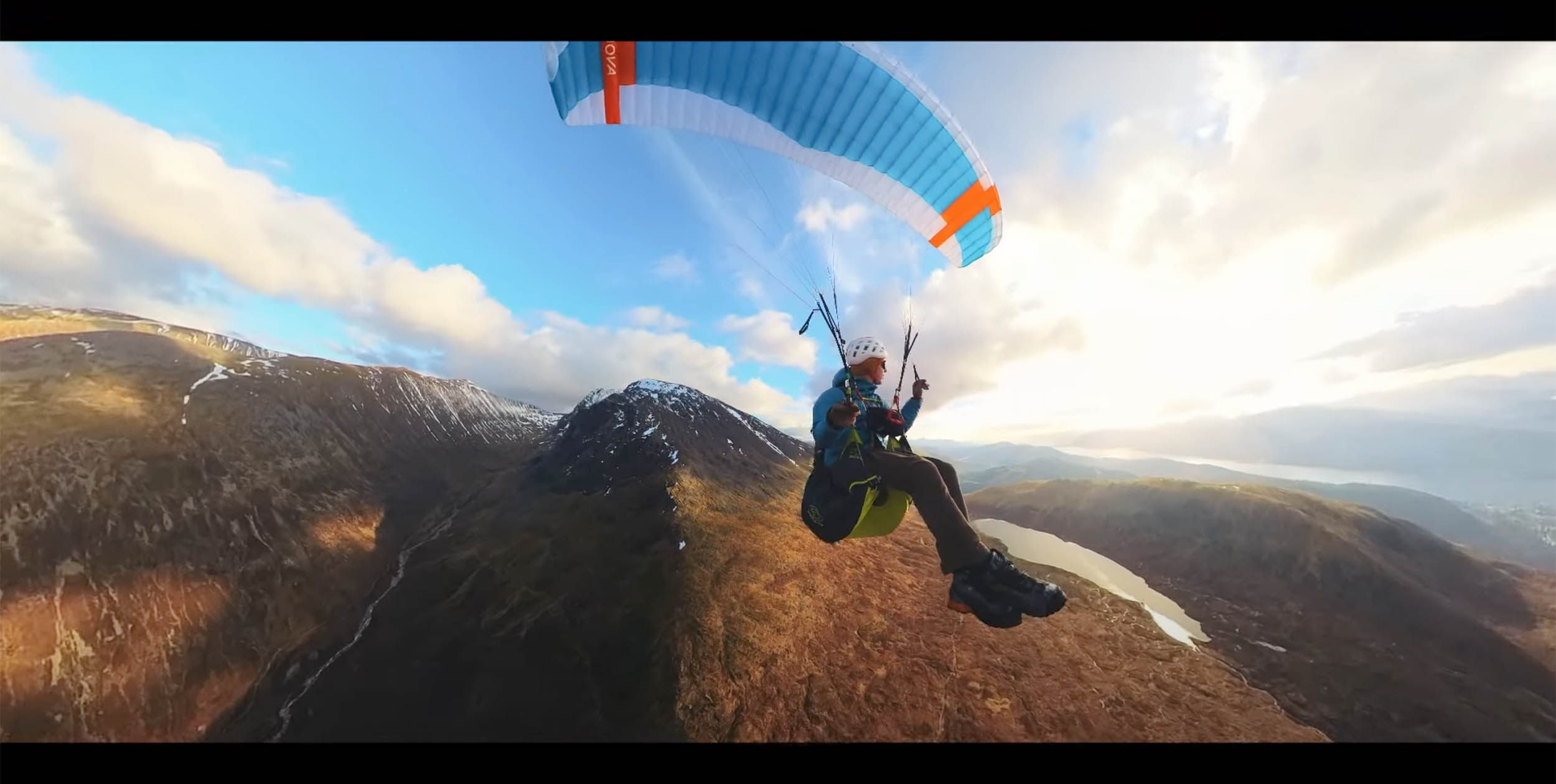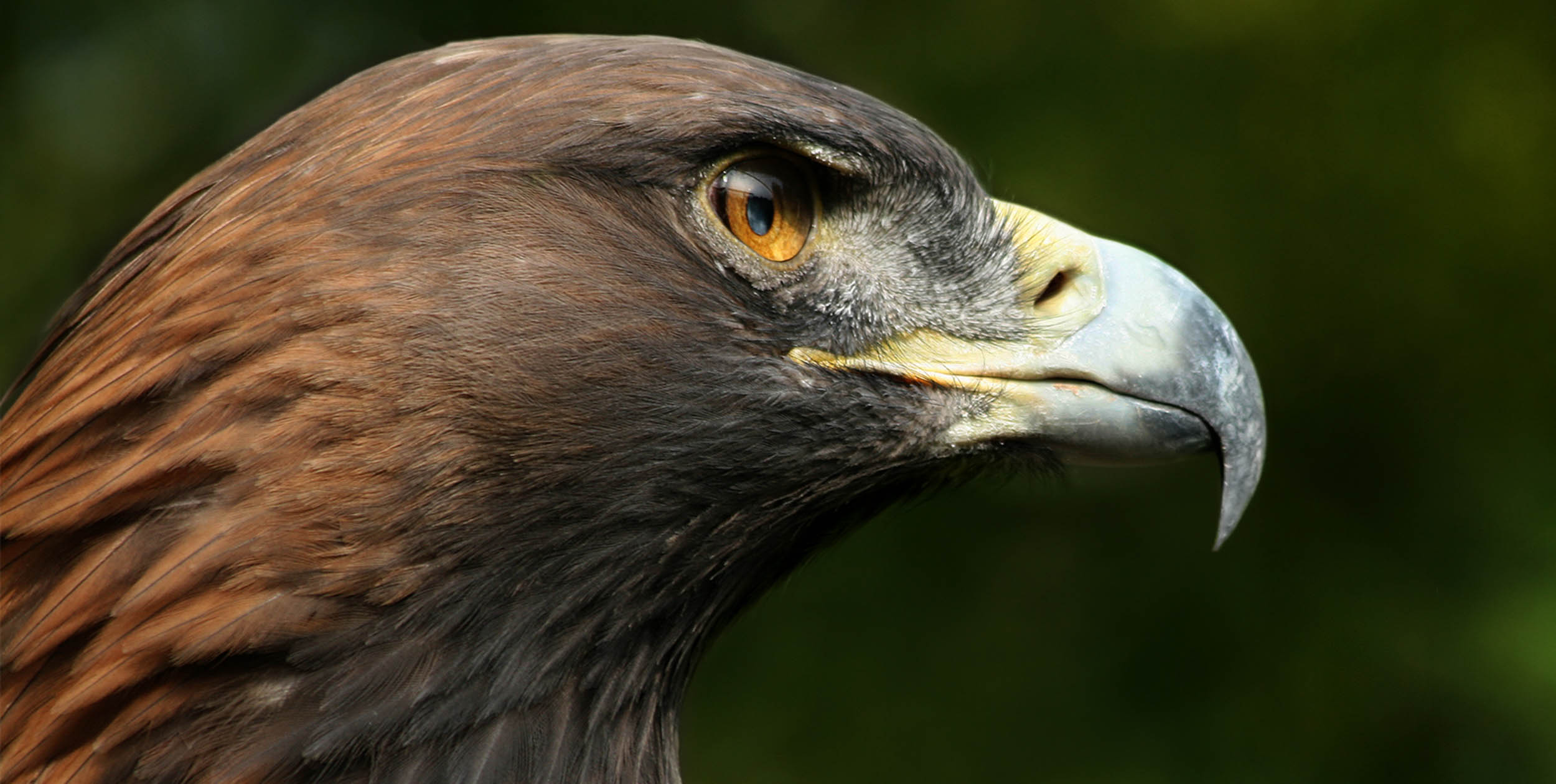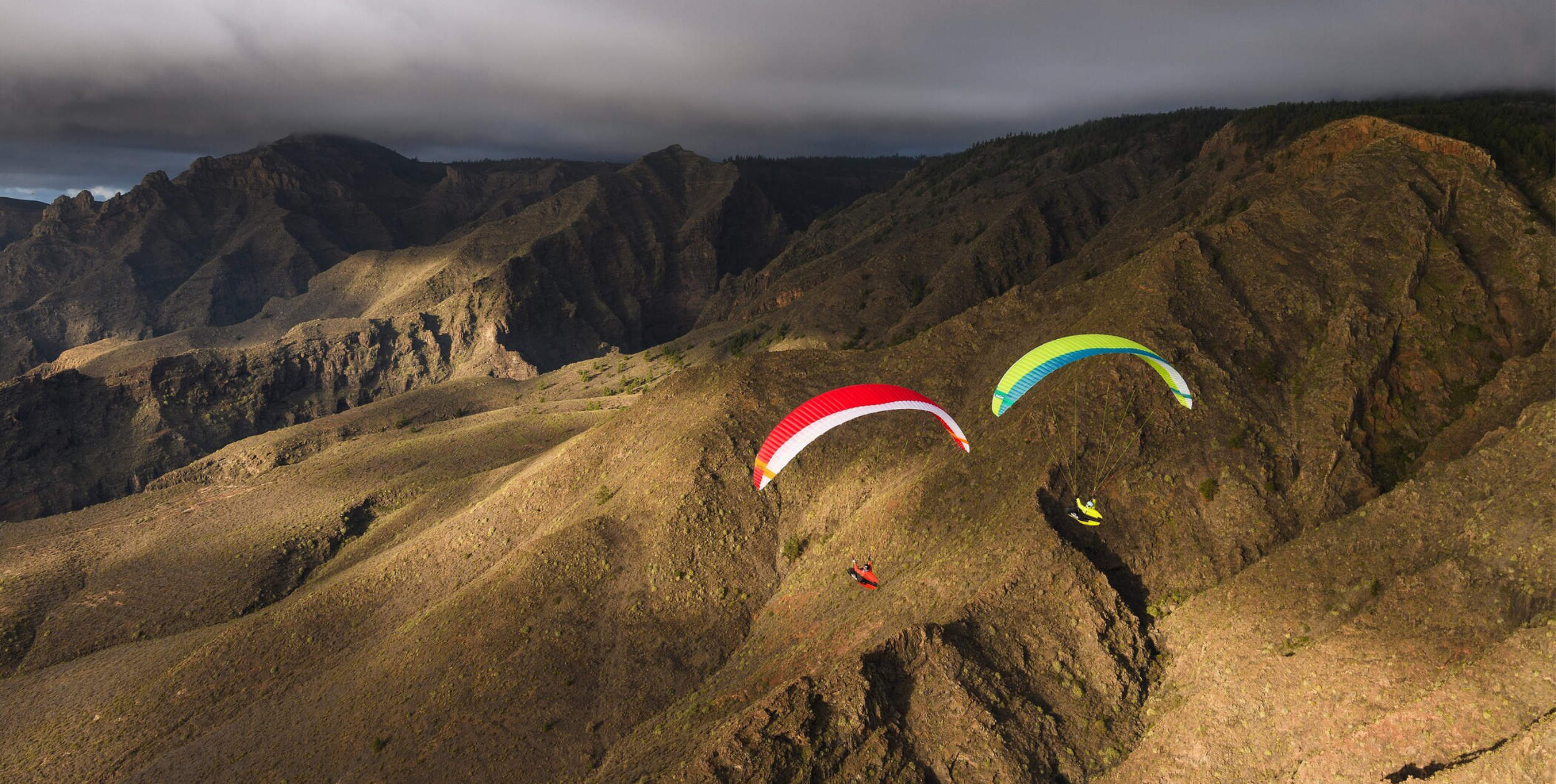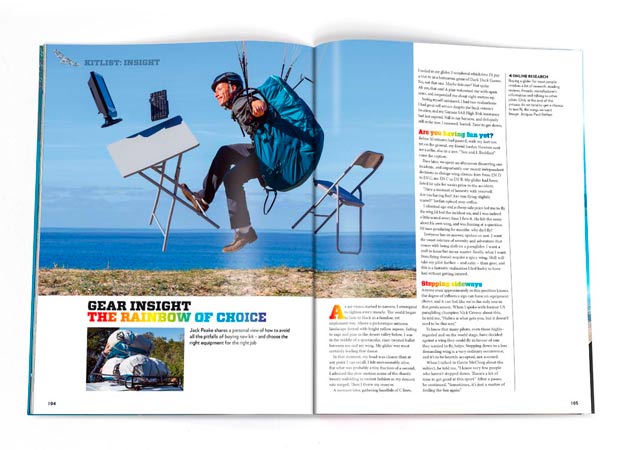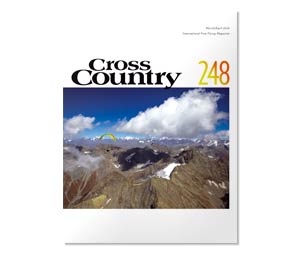Mike Kung on the ground
Limits? What limits? Matt Guerdes shakes his head in disbelief at Mike Kung’s latest feat: crossing the English Channel. Published in Cross Country magazine in 2003
“Fifty thousand dollars?” I asked incredulously. “What on earth could cost fifty thousand dollars?”
“Well, three helicopters, two of which will be just for the TV cameras,” Mike Kung answered. “It’s another world record. I have to convince authorities from two countries to allow it to happen, and if the weather isn’t perfect it could be a total catastrophe.”
I couldn’t fathom what Adidas could possibly be letting him blow $50,000 of their money on, but a few days later I received an email disclosing the plans for his latest adventure:
Mike was planning to cross the English Channel by paraglider.
Three years before, he had stood on the north coast of France, the south coast of England barely visible 35km in the distance. A balloon crew was at the ready to climb to 8000m where Mike would launch, and glide across the channel with altitude to spare. But high winds kept the team grounded.
But Mike is persistent, if not plain stubborn, and his plans for the second attempt revolved around a less fragile aircraft: a helicopter. Problem is that helicopters can’t fly to 8000m. Leaving at their max altitude of around 5000m meant that the crossing would be risky at best.
On paper, Mike would be able to glide approximately 26 miles. The crossing was 22 miles, leaving him a very narrow margin for error. The slightest headwind would see him splashing down, short of his goal, in the icy waters.
On June 2, 2003, Mike was bent on making his dream come to fruition. That evening, as the atmosphere began to calm, and the sun made its way slowly to the horizon, the team made its final system checks. The forecast was for light and variable winds from surface to 18,000ft. As the three helicopters powered up for the long climb to launch altitude, Mike’s oxygen system failed, and there was no time to fix it or trade it.
“It doesn’t matter!” Mike shouted, “Let’s go now! I’ve been a lot higher than this before!” The pilot shrugged, and the helicopter launched with Mike dangling 20m beneath it from a single rope.
The beginning of the climb-out went quickly, but above 4000m the climb rate slowed to a crawl as the helicopters struggled in the thin air, and began to overheat. At 5100m, the pilot ordered Mike to release.
The calculation for the height needed to get across was simple math. An imperfect opening of Mike’s wing would almost certainly mean that he would have to abort the attempt, or risk landing in the ocean.
Earlier, Mike had confessed feeling a little bit of pressure as he packed his wing into the D-bag. “It must go right the first time. There’s too much time and energy invested in this adventure.” But when the moment came, much to the relief of the entire team, the vivid design of his wing was open and clean just seconds after releasing.
“At 5300m I could see the curve of the earth; I could see both France and Britain, and 35km of open sea in front of me. The huge ferries in the channel looked like little white specks.
“There was a cross-wind, and at first it was very exciting – it didn’t look good. I was thinking that I might not make it! I was thinking to myself, that if I had to make an emergency landing, I could land on a ferry. There were many ferries in the channel!”
Mike was floating along so high above the ground that it was difficult to determine his forward speed even with the assistance of his GPS, and he radioed to the helicopters several times to confirm that he was penetrating towards his goal.
After almost thirty minutes of flight, the white chalk cliffs of Dover began to show through the haze. Mike relaxed more and more as the English coast came into view. He was going to make it.
He chose a cricket field near the coast, and wound up into an adrenaline-charged acro sequence above a crowd of unsuspecting spectators who were very much impressed, more so when one of the helicopters landed next to him, and they learned from where he had launched.
And thus shall the paraglider be entered into the logs of aircraft which have braved crossing that tantalizing body of water separating England from Europe, which for centuries has tempted adventurers of all sorts.
• Got news? Send it to us at news@xccontent.local
Subscribe to the world’s favourite hang gliding and paragliding magazine

